With over 700 pubs in the city alone there are names ranging from the exotic to the (seemingly) obvious, the stories behind these names are often as fascinating as the tales told by the staff manning their bars.
(521-523 Lawnmarket, Edinburgh EH1 2PE)
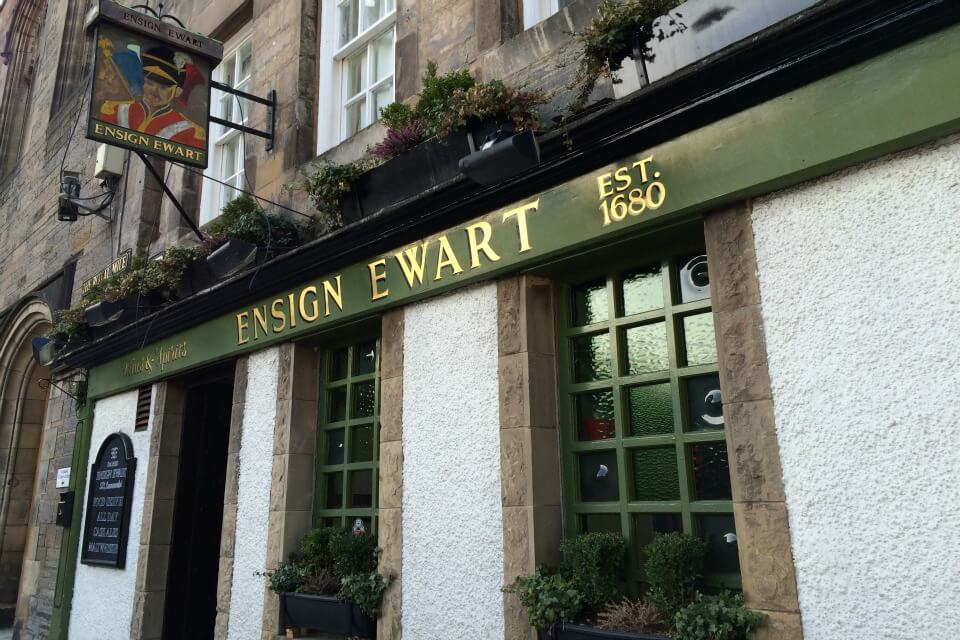
Picture: Wow 24/7
Considered to be the highest pub in the capital, the Ensign Ewart is named after an Ayrshire born military hero who was famed for capturing the regimental eagle standard of the French
45th Regiment (the French Invincibles) at the Battle of Waterloo in 1815. Ewart, a Scottish soldier of the Royal North British Dragoons, died in Salford in 1847, his unmarked grave was exhumed in the 1930s and his remains reburied on Edinburgh Castle Esplanade.
The colourful pub sign shows Ewart in his full British army regalia.
(14 West Port, Linlithgow EH49 7AZ)
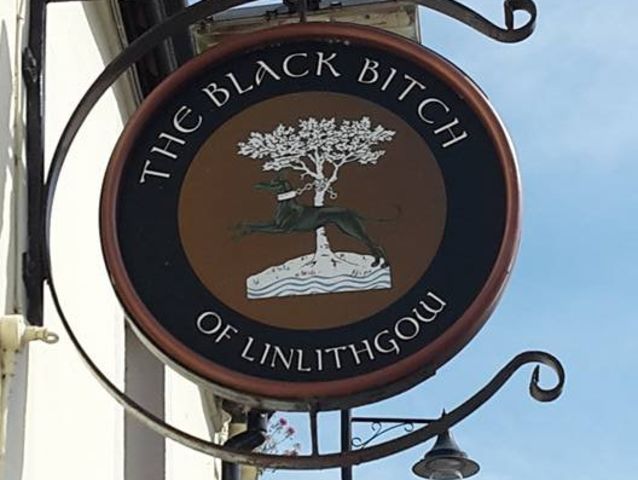
Picture: contributed
Sporting perhaps the most unusually named pub on this list, the Black Bitch actually refers to the ancient name given to those born in the town of Linlithgow, once the seat of Stewart monarchs such as Mary, Queen of Scots.
The exact reasons behind the area's choice of a coat of arms with a black greyhound chained to a tree are unclear, though a popular theory involves the aforementioned dog trying to save her master before being chained to a tree as punishment.
Her bravery and perseverance are now honoured as characteristics of the town and its people.
(2-8 High St, Edinburgh EH1 1TB)
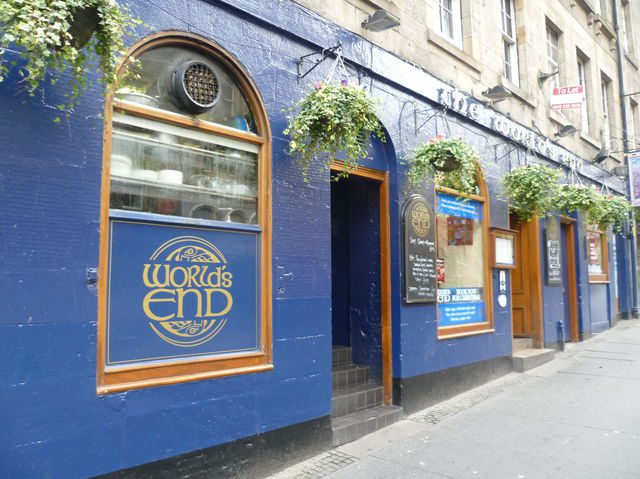
Picture: TSPL
Probably one of the most famous pubs in Edinburgh can be found on High Street, which despite its central location was once on the very edge of the city boundaries - hence the name 'World's End'.
The gates to the city and its walls were situated just outside the pub and to Edinburgh's residents this would have been the boundary of what they considered their world (the city) and the outside world which many of them had little knowledge of.
(29 – 35 Niddry St, Edinburgh, Lothian EH1 1LG, tel: 0131 558 8209)

This popular bar is said to take its name not only from the fact that it is haunted but from one ghostly incident in particular.
Describing itself as "Scotland’s most haunted pub", with the main spooky antagonist being the eponymous banshee, its most famous story is of workmen who were once renovating the pub.
The group were working in the closed pub when they heard a sobbing noise before finding what appeared to be a young woman with her head in hands, crying. When approached, the mysterious female lifted her face to gaze upon the workmen with eyeless sockets, and screamed a blood curdling cry that caused the labourers to flee.
The story has various versions including all of the workmen receiving a call few hours later informing them of the death of a family member.
Sections of the pub were once part of the infamous underground vaults of Edinburgh and the pub has a maze of rooms that extend off the main bar - hence the second part of the name.
(1-3 Angle Park Terrace, Edinburgh EH11 2JX)

Picture: TSPL
Like most things in Scottish culture the Diggers is not the official name for this fine Victorian bar, which when it opened in 1897 was named the Athletic Arms.
That name remains above the entrance today, but generations of Edinburgh drinkers have known the bar as the Diggers.
Why? Well, its close proximity to two graveyards should give you a clue. The pub's nickname became so ubiquitous that it was eventually added to the signage outside.
The Diggers has remained popular well into the 21st century thanks to the quality of its beer, traditional interior and close proximity to Tynecastle Park - the home of Heart of Midlothian FC. You'll be lucky find a seat if you visit on matchdays.
(43-45 The Causeway, Edinburgh EH15 3QA)
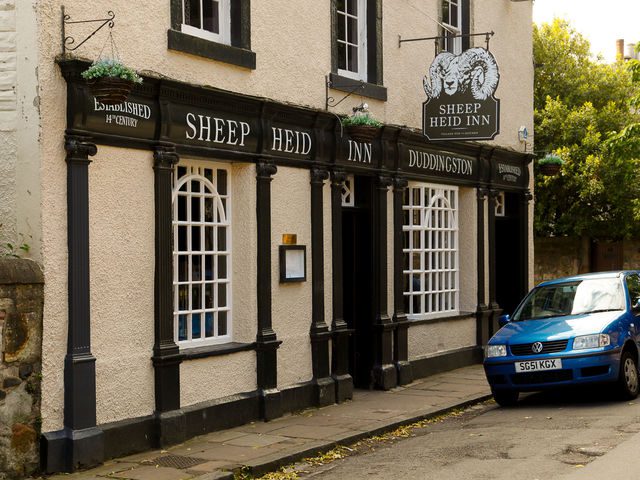
Picture: TSPL
Many of Edinburgh's residents consider this famous bar to be the oldest in the city (if not the country) as there has been a drinking establishment here - in some form of the other - since the 14th century.
The present building though dates to the 18th century, and retains an old-world charm with low ceilings, wooden paneling and even a Victorian skittles lane.
The origin of the pub's unusual name is unclear, but two explanations are commonly offered. The first suggests that sheep's heid broth (heid, of course, being the Scots word for head) was a local speciality back when the animals were kept in nearby Holyrood Park.
The other story suggests the name derives from an ornate ram's head snuff box, donated to the landlord of the pub in 1580 by King James VI - who is said to have been a regular customer.
(74-78 Grassmarket, Edinburgh, Midlothian EH1 2JR, tel: 0131 225 4851)
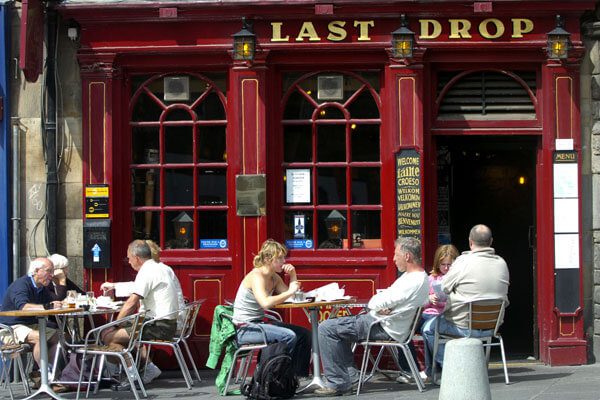
Picture: TSPL
Named after a reference to the last hanging to have occurred in the Grassmarket, the Last Drop has a suitably macabre back story.
Interestingly, the Grassmarket’s gallows were allegedly situated across from the pub and could help explain the high level of supposed paranormal activity within the confines of the popular Grassmarket watering hole.
Their website proclaims that they are allegedly haunted by a little girl in medieval clothing, with sightings of the diminutive spirit occurring in both the cellar and the bar.
Supposedly the mischievous little girl lived in the tenements that were later transformed into the pub. She has apparently been spotted by the bar’s employees over the years and has even supposedly whispered some of their names when they were alone in the building.
(435 Lawnmarket, Edinburgh EH1 2NT)

Picture: TSPL
One of the most famous pubs on the Royal Mile, Deacon Brodies is named after the larger than life character who was said to be the inspiration for Robert Louis Stevenson's Dr Jekyll and Mr Hyde.
Respectable locksmith and council member by day and expert thief by night, Brodie (1741-88) rose to become Deacon of the
Guild of Wrights and a Freeman of the city.
With a penchant for gambling and women (all of which were hidden from his unsuspecting friends, colleagues and family) Brodie took to thieving to financial pressure of his debts.
Eventually captured by is Majesty's Excise Office, he was hanged on the Tolbooth gallows, which he ironically had designed himself in 1788.
